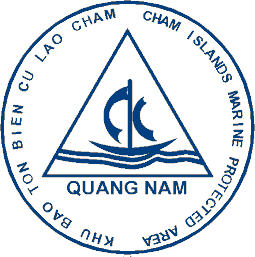
MPAs as part of solution towards a resilient eco-city

The Cham Islands MPA, as well as the Biosphere Reserve, are probably the most significant programs towards resilience-building in Hoi An. Hoi An officially declared its vision to become an eco-city by 2030. The MPA allows Hoi An to regulate fishing activities and pollution. The MPA has also supported the development of eco-tourism models to diversify local income sources, proving that environmental protection can also be compatible with economic growth.
Contexte
Challenges addressed
Hoi An is flooded every year during the winter, incapacitating all economic and social life in the city. Typhoons are also a big hazard, destroying crops, buildings, homes, schools, and infrastructure, and endangering people’s lives. Saline intrusion is also a concern and has been steadily increasing. Coastal and riverbank erosion is a serious challenge, with 8km of beach coastline lost.
Emplacement
Traiter
Summary of the process
Building Blocks
Conducting formal risk assessment
Enabling factors
Lesson learned
Designing and zoning an MPA for climate adaptation
Enabling factors
Lesson learned
Facilitating a co-management dialogue
Enabling factors
Lesson learned
Establishing local management infrastructure
Enabling factors
Lesson learned
Developing alternative livelihoods
Enabling factors
Lesson learned
Enabling stakeholder-driven patrolling and enforcement
Enabling factors
Lesson learned
Impacts
The MPA has supported opportunities to build and develop the community-based ecotourism home stay program. From 2002 to 2013, the number of tourists to the Cham Islands has increased from 1.000 tourists in 2002 to 150,000 tourists in 2013. The community-based land crab management program has demonstrated the power of thoughtful and sustained community participation in environmental decision-making. Prior to the work of the MPA, the land crab population has degraded gradually. 75% of the land crab population is now conserved, and the income of local participants four times larger.
Beneficiaries
Local communities, fishermen, tourism operators and tourists.
Story
The community participation in environmental and natural resources management has been improved gradually for the period from October 2003 to October 2013. The integrated and adaptive ecosystem management approach was applied by local people who were introduced to marine conservation, functional zoning, and control fishing. The year of 2006 indicated a strong change in the Cham Islands management system: The whole MPA is now managed by a community organization. Particularly, the MPA patrolling team has received a focal point who coordinates between different stakeholders, border guards, local police, fishery inspectors and communities to manage the marine resources in accordance with provisions for fishing on coral reefs and sea grass beds. In 2008 the Cham Islands community management approach started to integrate the six target marine resources: coral reefs, sea grass beds, lobsters, land crabs, beaches, and limpets. Based on the approved MPA management plan, the sustainable financial mechanism has been developed and implemented. During the period from 2009 until 2013, the Cham Islands MPA community management prioritized tourism activities. Community efforts were encouraged such as garbage separation at sources, avoiding the use of plastic bags, land crabs labeling. However, the tourism development also together with burden challenges on the natural resources consumption. Cham Islands MPA contribution serves the local community economic development. The Cham Islands community economic livelihood pattern was assessed by designed indicators for showing the community participation, the co-management on environmental and natural resource protection process, and Cham Islands people life quality, from October 2003 to October 2013.









